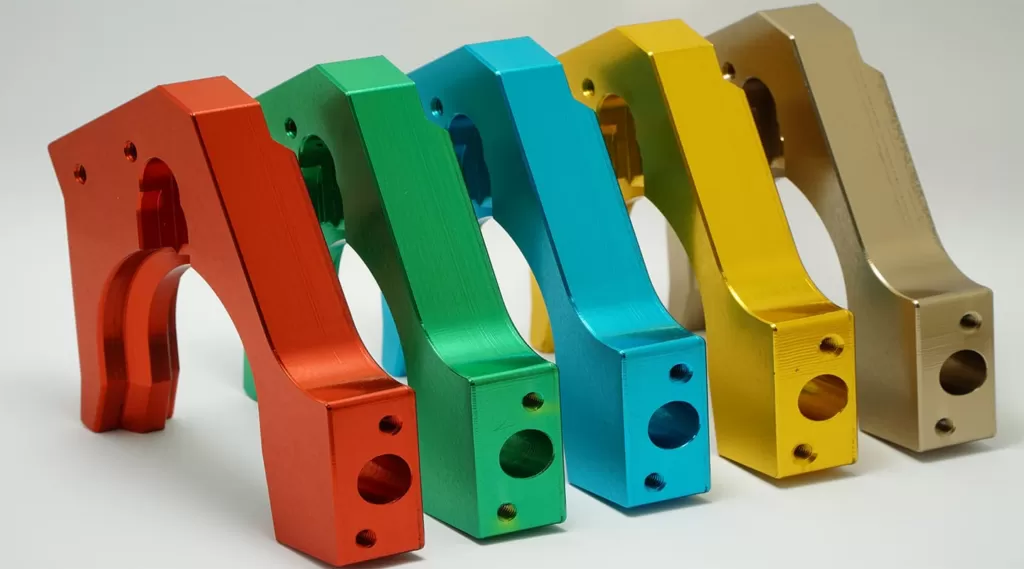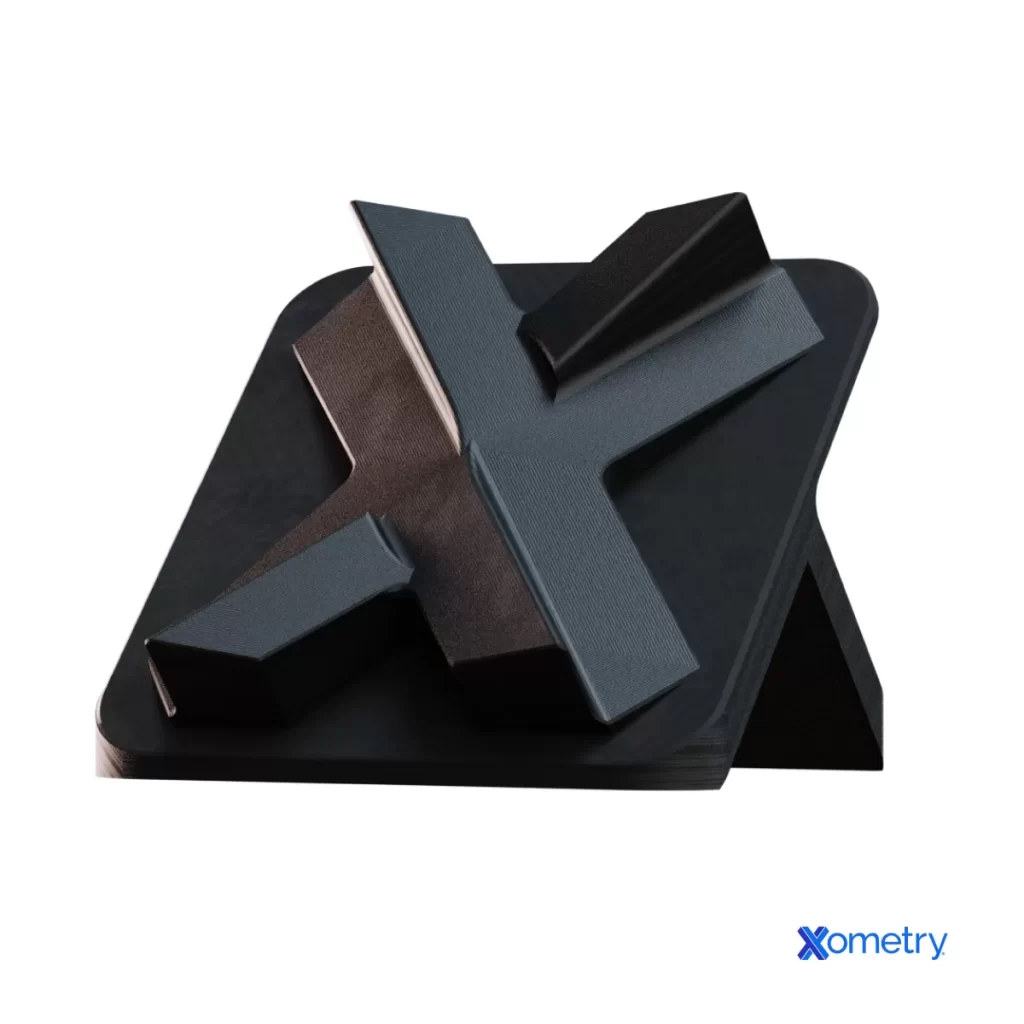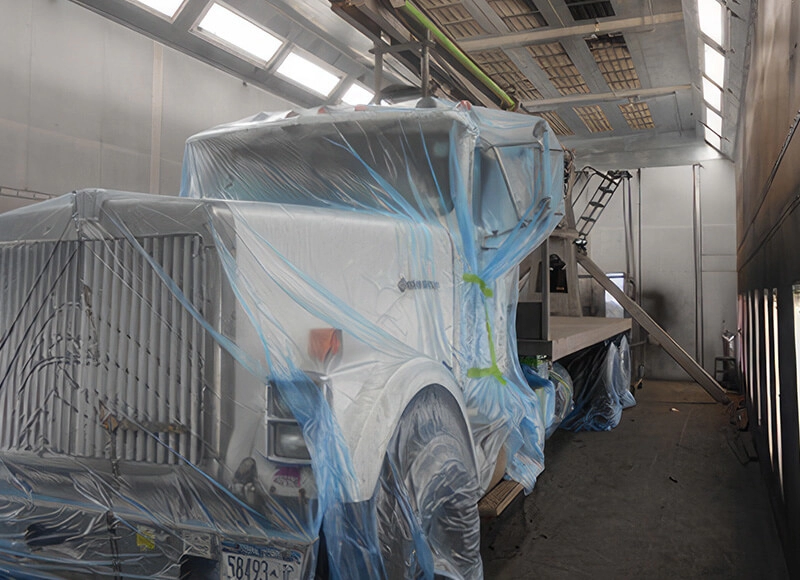Are you struggling to choose between anti UV anodizing and UV clear coating for your CNC parts? The right surface treatment can make or break your project’s durability, aesthetics, and budget.
As experts in CNC machining, we at HYCNC know that selecting the perfect finish is critical for long-lasting, high-performance components. With years of industry experience, we’re here to share actionable insights to simplify your decision.
In this guide, you’ll uncover the key differences between anti UV anodizing and UV clear coating, explore their benefits and drawbacks, and learn which is best for your specific needs—whether it’s aerospace, automotive, or architectural applications.
Let’s dive in and find the ideal solution for your CNC project!
What Is Anti UV Anodizing
Anti UV anodizing is an electrochemical process that creates a thick, UV-resistant oxide layer on metal surfaces, primarily aluminum. This protective layer is much thicker than standard anodizing—about 20 to 30 microns compared to the usual 10 microns—making it especially effective at shielding the metal against ultraviolet rays.
Key Features
- Thicker anodic layer (20-30 μm) for enhanced protection
- Superior UV resistance that prevents surface damage from sun exposure
- Excellent corrosion resistance and high heat tolerance
- Eco-friendly process using minimal harmful chemicals
Common Applications
- Aerospace components exposed to harsh environments
- Architectural facades that need long-lasting finishes
- Automotive parts requiring durable surface protection
- Marine structures facing corrosive saltwater conditions
Benefits
- Significantly improves durability and lifespan in extreme conditions
- Protects surfaces against fading, cracking, and discoloration caused by UV exposure
Drawbacks
- Higher upfront cost due to thicker oxide layer and longer processing time
- Limited color options, mostly matte finishes rather than glossy
- Best suited for aluminum, with limited use on other metals
Anti UV anodizing is ideal when you need a long-lasting, tough surface treatment that stands up to intense sunlight and harsh environments.
What Is UV Clear Coating
UV clear coating is a protective layer applied to surfaces using spray, dip, or roll methods and then cured under UV light. This creates a shield that helps protect materials from damage caused by sunlight and wear.
Key Features
- Quick application with modern spray and curing techniques
- Available in glossy or matte finishes for flexible looks
- Eco-friendly, with low VOC emissions for safer use
Applications
- Wood, plastics, and metals
- Electronics and automotive components
Benefits
- Cost-effective for initial application
- Adds scratch resistance and improves appearance
- Works well on various materials beyond just metals
Drawbacks
- Less durable than anti UV anodizing
- Needs regular maintenance and reapplication in tough environments
- More prone to scratches over time compared to anodized surfaces
Anti UV Anodizing vs UV Clear Coating Head-to-Head Comparison
Durability
Anti UV anodizing creates a thicker, tougher layer on aluminum, offering better corrosion and wear resistance. UV clear coating protects well but tends to wear down faster, especially in harsh environments.
UV Protection
Anodizing delivers strong, long-lasting UV resistance that helps prevent fading and damage. Clear coating gives moderate UV protection but may break down sooner with prolonged sun exposure.
Cost
Anodizing comes with a higher upfront price because of the more involved process. UV clear coating is cheaper to apply at first but might need reapplication over time, adding to costs.
Application Speed
Applying a UV clear coating is quick and straightforward, often done by spraying. Anti UV anodizing takes longer since it’s an electrochemical process needing more steps.
Aesthetic Options
Clear coating offers flexibility with glossy and matte finishes, allowing more design choices. Anodizing mostly results in matte, metallic looks and has fewer color options.
Material Compatibility
Anodizing is mainly suited for aluminum parts. UV clear coating works on a wider range of materials, including metals, plastics, and wood.
Environmental Impact
Both processes are eco-friendly. However, anodizing tends to produce less waste and uses fewer harmful chemicals, making it a greener option overall.
Which Is Right for Your CNC Project
Choosing between anti UV anodizing and UV clear coating depends on your project needs and materials.
When to Choose Anti UV Anodizing
- Outdoor applications like building facades, marine parts, and architectural details where long-term UV and corrosion resistance matter
- High-temperature or high-stress environments such as aerospace and automotive components
- Projects where durability and lifespan are top priorities, especially with aluminum parts
When to Choose UV Clear Coating
- Budget-friendly projects with moderate UV exposure and less demanding conditions
- Applications focused on aesthetics, such as consumer electronics, furniture, or decorative items
- Parts made from non-aluminum materials or mixed materials like plastics, wood, and metals
Case Study
At HYCNC, we helped a client decide on the best finish for an outdoor aluminum CNC part used in a coastal environment. Because of the need for strong UV resistance, corrosion protection, and long-life durability, we recommended anti UV anodizing. This ensured the part held up well to sunlight, salt spray, and wear without fading or cracking over time.
For projects needing a quicker, cost-effective solution with more finish options, UV clear coating can be a smart pick, especially when aluminum isn’t the primary material.
If you want to learn more about anti UV anodizing and its benefits, check out our detailed guide on anodizing aluminum.
Why Choose HYCNC for Surface Finishing

At HYCNC, we combine deep expertise in CNC machining with advanced surface finishing options like anti UV anodizing and UV clear coating. We tailor each project to fit your specific needs, whether you want long-lasting UV protection or a sleek look for your parts.
Here’s why local U.S. businesses trust us:
- Custom Solutions: We help you choose the right surface treatment based on your material, budget, and end use.
- Quality Focused: Every finished part meets strict quality standards for durability and appearance.
- Eco-Friendly Practices: Our processes minimize waste and use safe materials, aligning with U.S. environmental standards.
- Fast Turnaround: We understand deadlines and work efficiently to keep your production on track.
Ready to protect and enhance your CNC parts? Contact HYCNC today for a free consultation or quote. We’re here to help you get the perfect finish for your project.
FAQs
What is the main difference between anti UV anodizing and UV clear coating?
Anti UV anodizing creates a thick, durable oxide layer on aluminum offering long-lasting UV and corrosion resistance. UV clear coating is a thinner protective layer applied to various materials, providing moderate UV protection and a wider choice of finishes but less durability.
Can UV clear coating be applied to aluminum CNC parts?
Yes, UV clear coating works well on aluminum and is often used for cosmetic protection and scratch resistance. It’s a good option when color variety or faster application is needed.
How long does anti UV anodizing last in outdoor conditions?
Anti UV anodizing can protect aluminum parts outdoors for 10+ years without significant fading, cracking, or corrosion, especially in harsh environments.
Is UV clear coating more cost-effective than anodizing?
Initially, yes—UV clear coating usually costs less and applies faster. But it may need reapplications in outdoor or high-wear situations, which can add up over time compared to anodizing’s longer lifespan.
Why choose HYCNC for surface treatments?
At HYCNC, we specialize in CNC machining combined with expert surface finishing like anti UV anodizing and UV clear coating. We focus on quality, quick turnaround, and tailor solutions to your project’s needs, especially for durable, UV-resistant coatings on CNC parts. Contact us for a free consultation.




